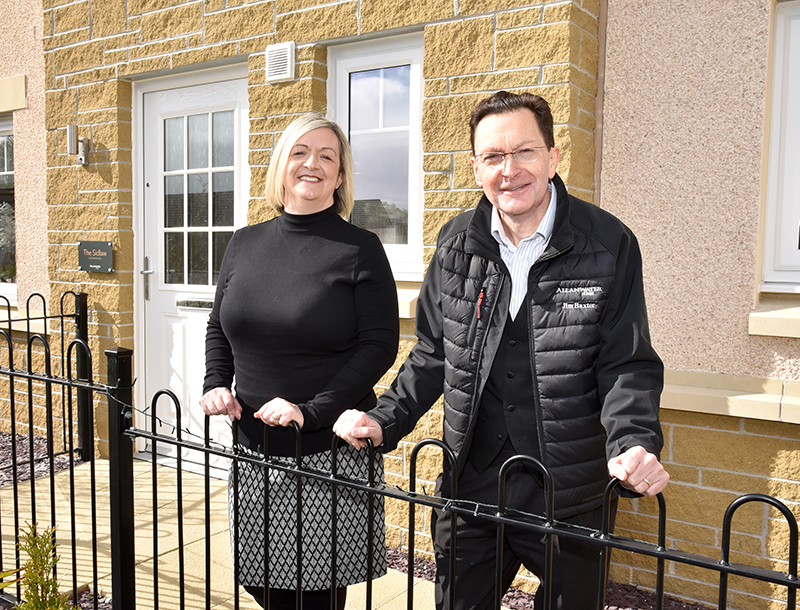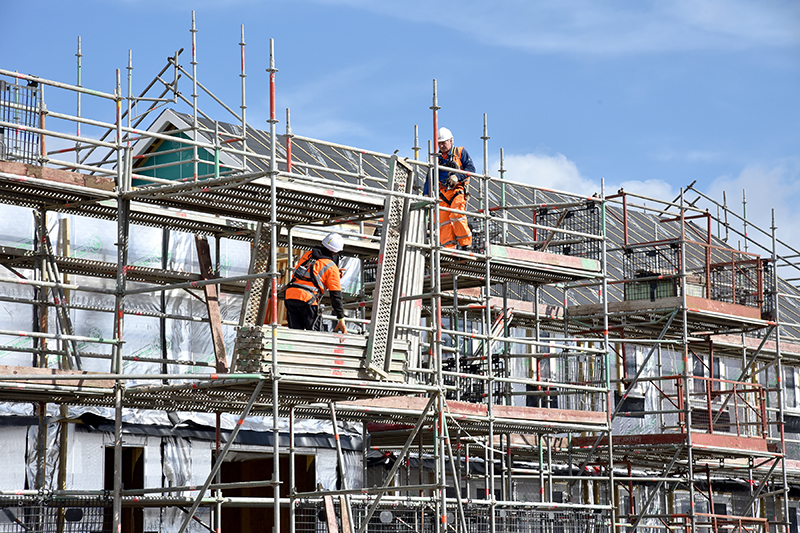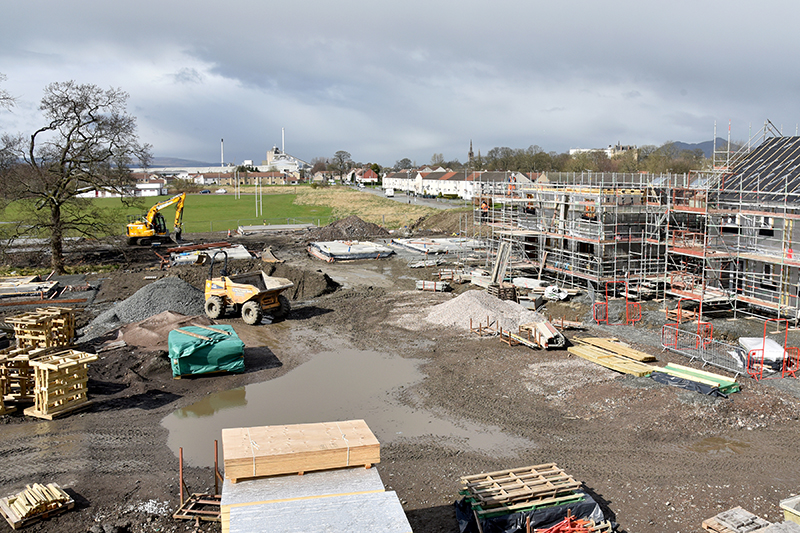
ALLANWATER Homes has described the planning process as the ‘greatest impediment’ to accelerating the delivery of much-needed new housing in Scotland.
The Bridge of Allan-headquartered business currently has developments in Alloa, Chryston, Carluke and Glenrothes, with more sites in the pipeline around the central belt.
While the family-owned firm has gone from strength-to-strength in recent years, director Jim Baxter told Project Scotland the planning process for getting new sites off the ground has become ‘too torturous, too time-consuming, and too difficult’.
Jim revealed he has sympathy for council planning departments, which he said are getting ‘drowned in paperwork’ and in need of greater resources. Referring to changes he’s seen in the housebuilding sector over the years, he said there is no doubt that the planning process now takes a lot longer.
“Why does it take longer? Because there are more different points, more different boxes that you’ve got to tick,” Jim explained. “Some of that is legislative and code-related. The third part is that although there’s this huge clamour for building more houses, and a lot more people trying to build houses, we’re not getting there because we have the same number of people doing the planning aspect of it within councils.”

Jim would like to see a reduction in red tape and priority given to fast-tracking applications.
Allanwater Homes can trace its roots back to 1980 when the firm was founded by Ian Stirling, the late father of current MD David Stirling. The business started out specialising in refurbishment projects before expanding into light industrial and commercial developments.
Allanwater became heavily involved in the care home sector and at one point had 300 residents in various locations around central Scotland. That section of the company was sold in 2006 and the money from that was invested into building houses. Allanwater Homes was established as a distinct company within the Allan Water Group portfolio and has since been active in locations ranging from Dunblane as the most northernly point all the way down to the Heartlands on the M8 corridor.
Jim, who joined the business in 1998, said the company has benefited from being a smaller developer with a flatter management structure. A lot of emphasis is put into detail and the fine touches in building houses.
“We are a small business with a huge interest in our customers and the community,” he added. “We’re very enthusiastic about making a connection with people and a lot of the things we do, particularly when we’re developing new styles of houses, we’re taking on board everything that comes back from the salespeople and what the customers have been saying to them.”

The mainstay of the business for the last 20 years has been Oaktree Gardens in Alloa. The development is now onto its ninth and final phase of housebuilding and has become a real asset for Clackmannanshire. Ian Stirling led the negotiations to buy the site back in 2003 and Allanwater has so far delivered more than 200 properties in a semi-rural setting.
“It was a really good investment for us,” Jim said. “It took us a while to get going; we wanted to bring in some other housebuilders to buy some land, so we got part of our investment cash back. We had Bellway and Robertson Homes come along and they built the first two phases. And then we started building.
“We’ve gone from very luxurious five-bedroom houses to three-bedroom terraced houses and every flavour in between.”
The latest phase comprises 91 three and four-bedroom properties featuring the latest in design and customer must-haves, including renewable energy and patio doors. In keeping with previous phases, the aim is to provide a development that is impressively landscaped and offers plenty of greenspace.

Alloa has become Allanwater Homes’ own community over the past two decades, with the firm sponsoring local sports teams and donating to foodbank appeals. Some 400 people turned up at a fun day event to celebrate the opening of the latest phase, highlighting the positive community impact the site has had. It has also provided a major employment boost in the area.
“Today there’s probably about 200 people on site with all our subcontractors,” Jim added. “We’ve got people from every trade, from those laying the foundations all the way to putting on the roofs and electric supply. 200 people is a lot for a site manager to look after. Craig Canavan, our site manager here, is phenomenal. It’s going like a fair.”
As well as the obvious driver of location, Jim attributes the Alloa success to listening to customers, providing a product they want, and at a price they can afford. Allanwater works with prospective homebuyers all the way through the process, guiding them on all aspects.
“It’s working through the art of the possible so that you can get somebody into the house that they really want to live in, in a timescale that’s sensible, and at a degree of affordability that they have the sums to accommodate,” Jim stated.

Aside from Alloa, Allanwater Homes is approaching the end of a joint venture development in Chryston, North Lanarkshire, and is poised to deliver a site on the outskirts of Glenrothes, Fife. The business has also pre-launched a site in Carluke which registered around 200 enquiries before a spade even went into the ground.
“Carluke is something we’ve been talking about for two or three years,” Jim explained. “It’s been a really interesting one to get out of the ground on the basis that it’s not just buying a piece of land from one person; we actually had to deal with seven different people. We’re hugely enthusiastic and expect to be on site there for a six-year period.”
Jim revealed that Allanwater Homes hasn’t directly experienced some of the skills shortages that other firms in the sector have been grappling with. When it comes to training, the business aspires to make people multi-skilled and many senior members of staff have worked their way up the ranks, having started in more junior roles.
When asked about currents trends in the housing market, Jim replied that the clamour for working from home seems to be in decline. In the initial post-pandemic period, there was more interest from buyers in properties with a home office, either as separate units in the garden or by repurposing a spare bedroom
“Certainly, in one of our five-bedrooms we had the ideal house for doing that,” Jim added. “I can’t tell you what the uptake of that has been in terms of converting it into a home office. Planning ahead, we’re not hearing people say: ‘I’d like a three-bedroom and a home office’. Nobody says that. The enthusiasm, desire and need for a home office is history.”











